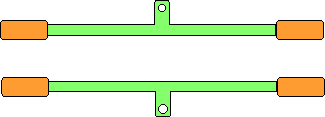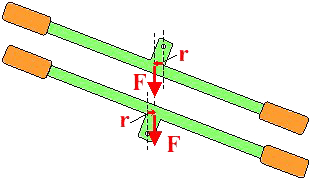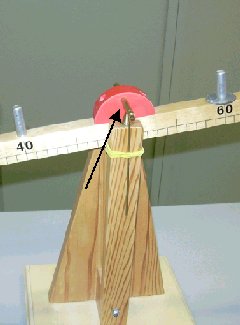Dancing Little Dog

The head of the dog mounted on a rod with balance weight on the other side resembles a see-saw hidden inside the trunk of the dog. The balance weight can be moved backward/forward so that you can find the centre of gravity. However, the point of suspension is quite close to the centre of gravity.

1. Permanent or transitory balance are shown by force vectors (or rather their moment): in the dancing little dog or in the leaning hanger the force moment (i.e. force multiplied by lever) rises with the degree of slope. Force moment brings about regaining balance. In the see-saw the force moment rises with the oscillation movement, but since their directions are the same, the balance is transitory, unless the see-saw has its balancing point above the 'board', as can be seen in the picture.

2. Slow swinging movement of the head of the dog is described by the following formula:
in which I is moment of inertia equal to I = (1/12)ml2 for the rod suspended inside, l is the length of the rod and r is the centre of gravity - suspension point span. As the centre of gravity and suspension point are close and I is relatively big, the head of the dog is swinging slowly.
It is worth pointing out that the mass of the rod does not have any impact on the oscillation cycle. Due to its considerable mass, the head swings for a relatively long time, the air resistance force is relatively low.
3. The head is hanging on a thin diagonal hook. As a result, even with considerable oscillation movement, it remains in quiescence .
Other examples of 'swinging' toys are 'Fourier' little beetles responding to even minimal oscillation in the basis.
JW Player goes here
|
JW Player goes here
|
|
JW Player goes here
|
Look at this pretty big 'swinging' toys in front of Chemistry Department building at Freie Universitšt in Berlin.